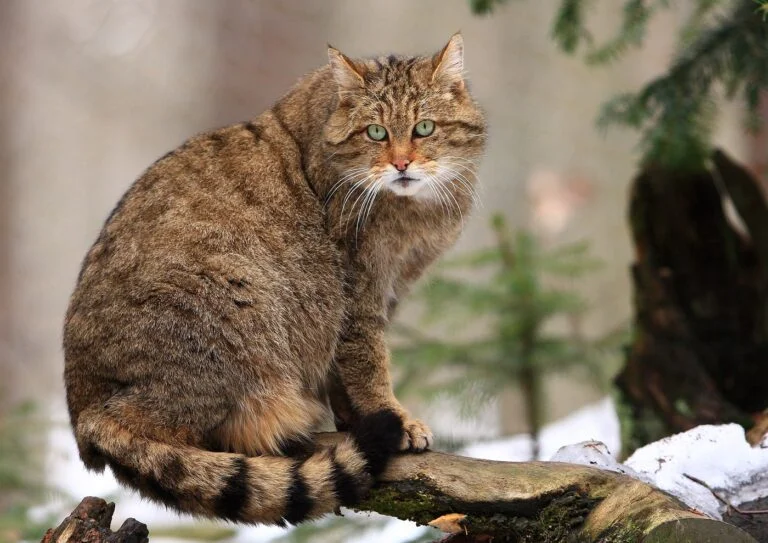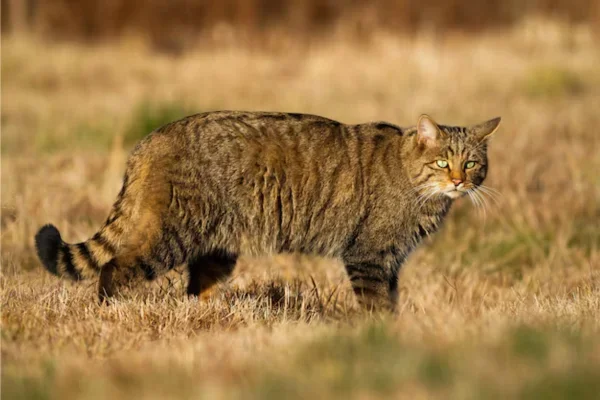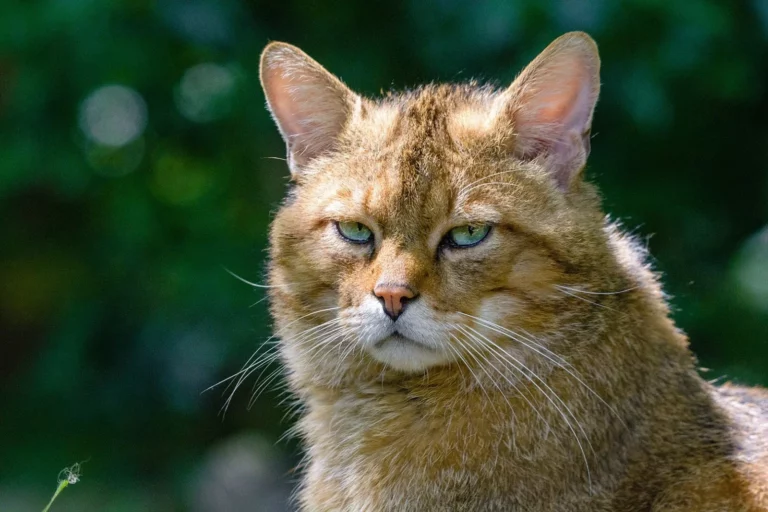Meet the Wildcat: A Fascinating Feline
Wild cats are enigmatic and majestic creatures that have intrigued and fascinated humans for centuries. They inhabit diverse environments around the world, adapting uniquely to their conditions. In this article, we'll explore the characteristics, habitat, behavior and curiosities about these impressive felines.
Origin and History
The wild cat has a long history dating back thousands of years. They are considered to be the ancestors of the domestic cats we know today. These felines are found in various parts of the world, including Africa, Europe and Asia. Their ability to survive and adapt to different environments has made them iconic figures in the animal kingdom.
Physical characteristics
The appearance of the Wildcat is robust and athletic, with a coat that varies according to the region in which they live. In general, their coat is dense and camouflaged, helping them to hide from predators and hunt effectively. Their large, bright eyes are adapted for night vision, allowing them to be efficient hunters at night.
Contents

Habitat and distribution
These cats are extremely adaptable and can be found in a variety of habitats, from dense forests to open savannahs. Each subspecies of wildcat has its own habitat preferences, but they all share the ability to adapt to changes in the environment. They are solitary by nature, preferring to live and hunt alone.
Behavior and Diet
Wild cats are solitary and opportunistic hunters. Their diet consists mainly of small mammals, birds and insects. They use their camouflage skills and patience to approach their prey undetected. These cats are also known for their ability to climb trees and swim, which gives them an advantage in catching a variety of prey.
Reproduction and Life Cycle
The reproductive cycle of wild cats varies according to the region and the availability of food. In general, females give birth to a litter of two to four kittens after a gestation period of around two months. The kittens are born blind and helpless, depending completely on their mother for food and protection in the first few weeks of life.
Conservation and Threats
Despite its adaptability, the wild cat faces several threats, including habitat loss, poaching and competition with invasive species. Conservation programs have been implemented in various regions to protect these cats and their habitats. Public awareness and education are essential to ensure the survival of these species.
Curiosities about the Wild Cat
- Genetic Diversity: There are several subspecies of wild cat, each adapted to its specific environment. This genetic diversity is crucial for the survival of the species as a whole.
- CommunicationThe feral cat uses a combination of vocalizations, scent marks and body postures to communicate with other cats and mark its territory.
- Mythology and CultureThese felines have been revered and feared in various cultures throughout history. In some traditions, they are seen as symbols of freedom and independence.
Ecological importance
Wild cats play a crucial role in the ecosystems in which they live. As top predators, they help control the populations of rodents and other small species, maintaining the ecological balance. Their presence is an indicator of a healthy and functional environment.
The Domestication of the Wildcat
The domestication of the wild cat began around 9,000 years ago in the Middle East. Humans began to realize that these felines helped control the rodent population, which threatened grain stocks. Over time, a symbiotic relationship developed, leading to the domestication of the cats we know today.
Wild Cat vs. Domestic Cat
Although wild and domestic cats share a common ancestor, they have several notable differences. Wild cats tend to be larger, more robust and more independent. Their hunting and survival behaviors are much more pronounced than those of domestic cats, who often depend on humans for food and shelter.
Current Threats and Conservation Efforts
Wild cats face several modern threats, such as habitat loss due to urbanization and agriculture, as well as illegal hunting. Conservation organizations around the world are working to protect these cats and their habitats by raising awareness and implementing captive breeding programs.

The Role of Wild Cats in Mythology and Culture
Throughout history, wild cats have been important figures in various mythologies and cultures around the world. In Egyptian mythology, for example, the goddess Bastet is often represented as a lioness or a woman with the head of a lioness, symbolizing protection, fertility and love. In other cultures, wild cats are seen as symbols of independence, freedom and mystery. These cultural representations reflect the admiration and respect that humans have for these magnificent felines.
Wild Cat Studies and Research
The wild cat has been the subject of several studies and scientific research aimed at better understanding its behavior, genetics and ecology. These studies are essential for developing effective conservation and protection strategies for these animals. Genetic research, for example, helps to identify subspecies and understand their adaptations to different habitats. In addition, monitoring using GPS collars and tracking cameras provides valuable data on the movement patterns and living areas of wild cats.
Conclusion
Wild cats are true survivors, adapting to a variety of environments and playing a vital role in their ecosystems. Protecting these felines is essential not only to preserve biodiversity, but also to maintain the natural balance of the habitats in which they live. Learning about these magnificent animals is the first step towards ensuring their future survival.
Thank you for visiting us and check out our other work








